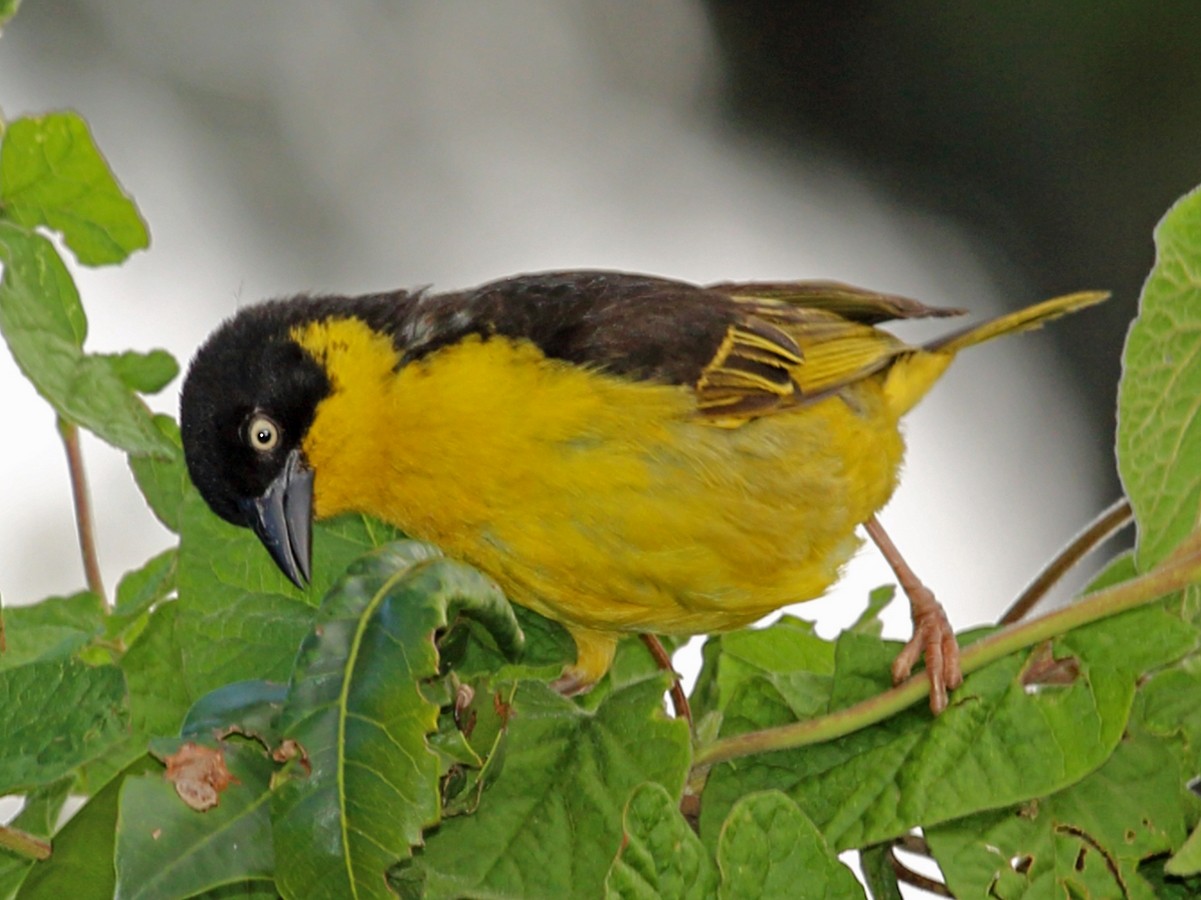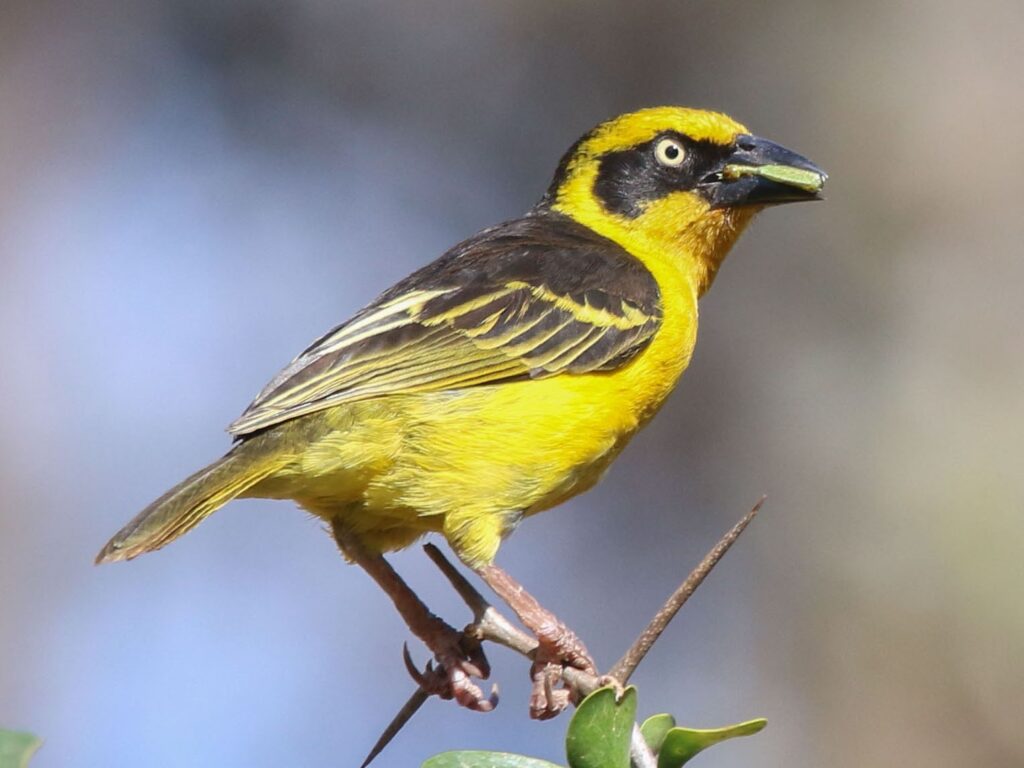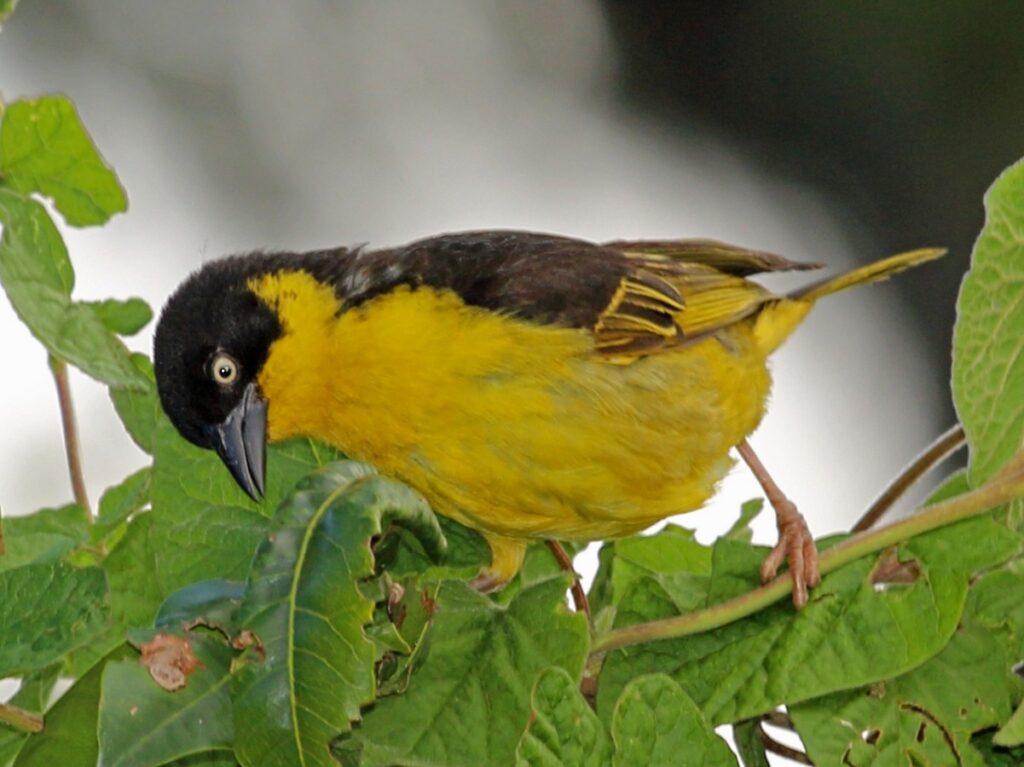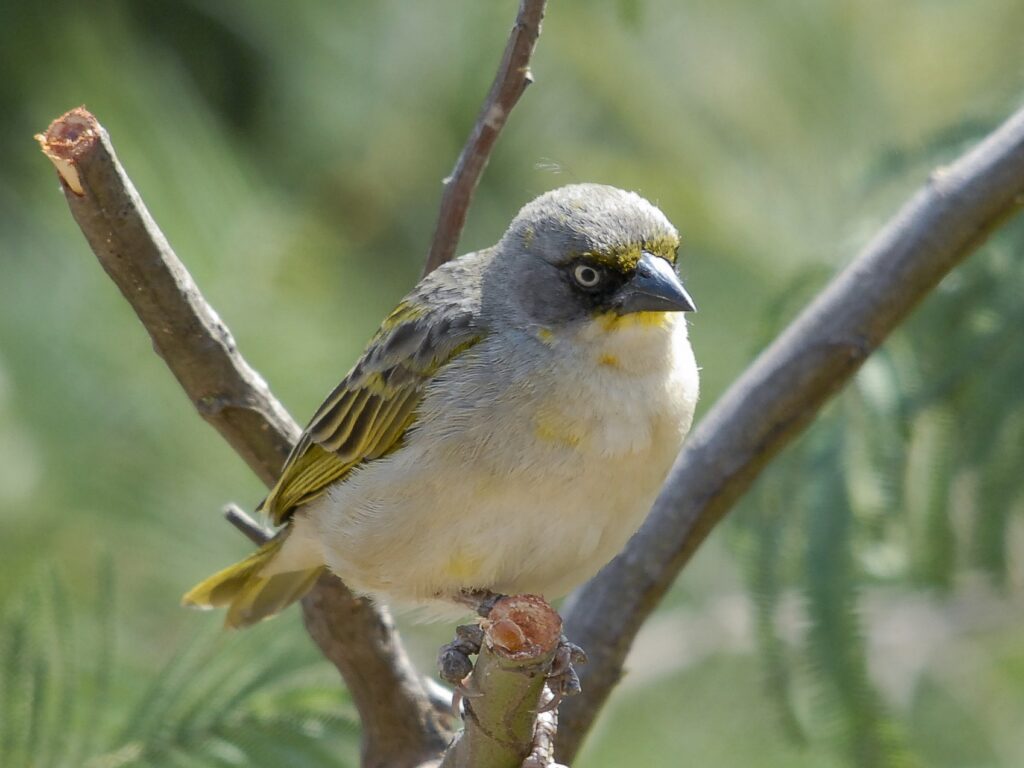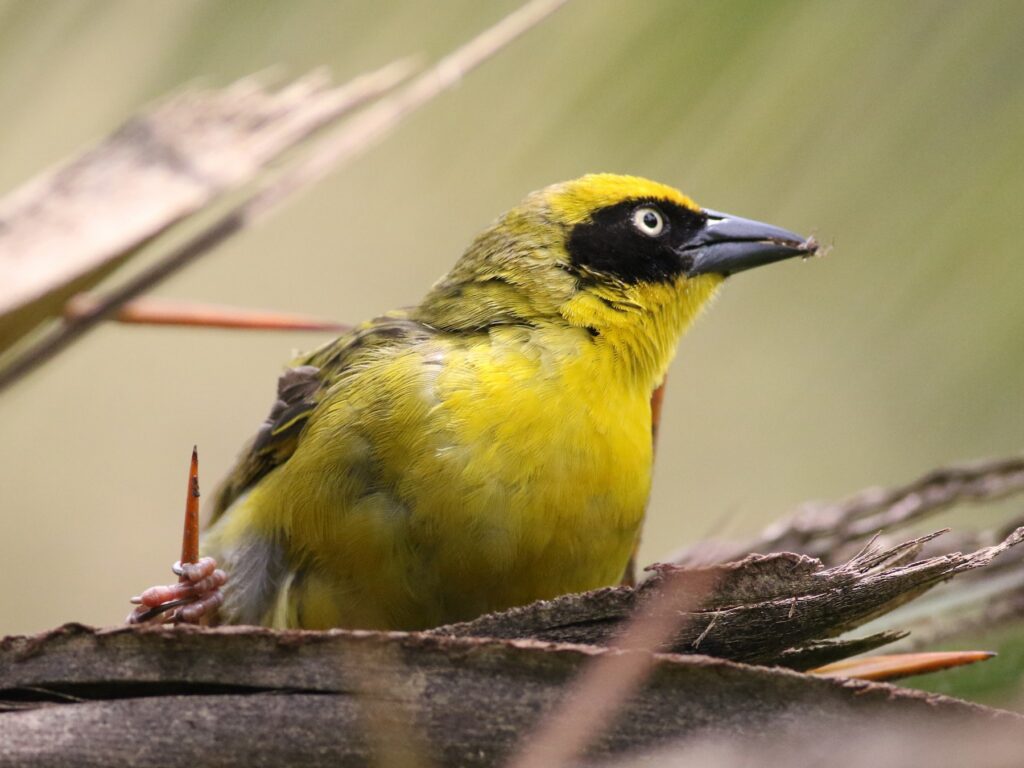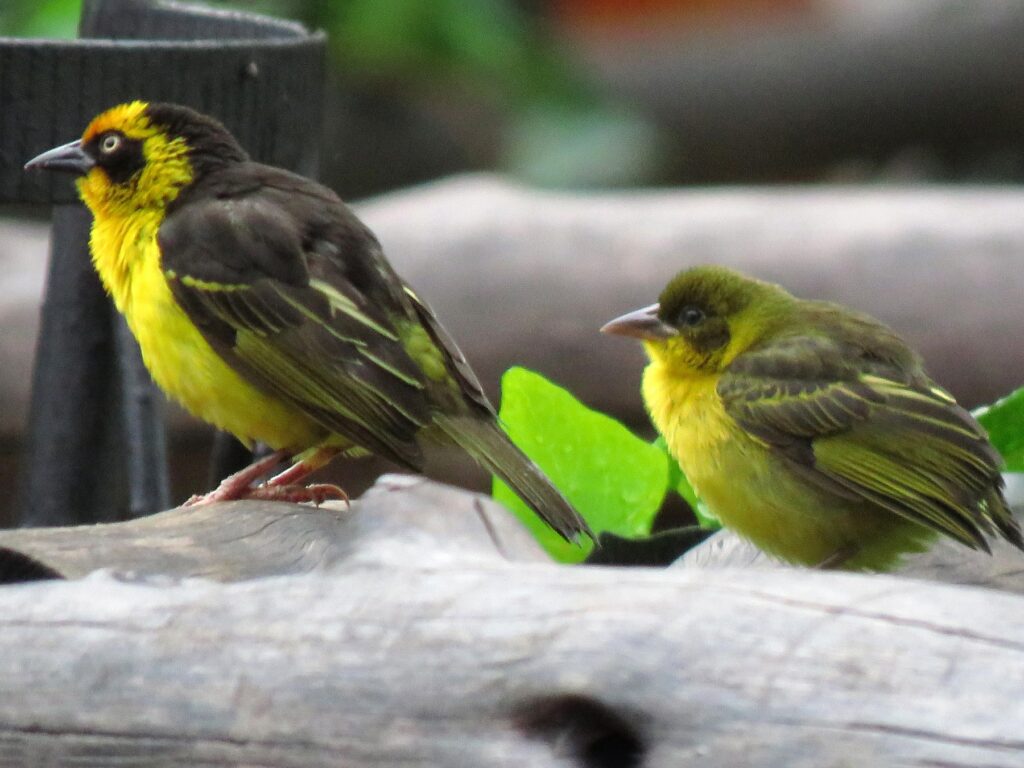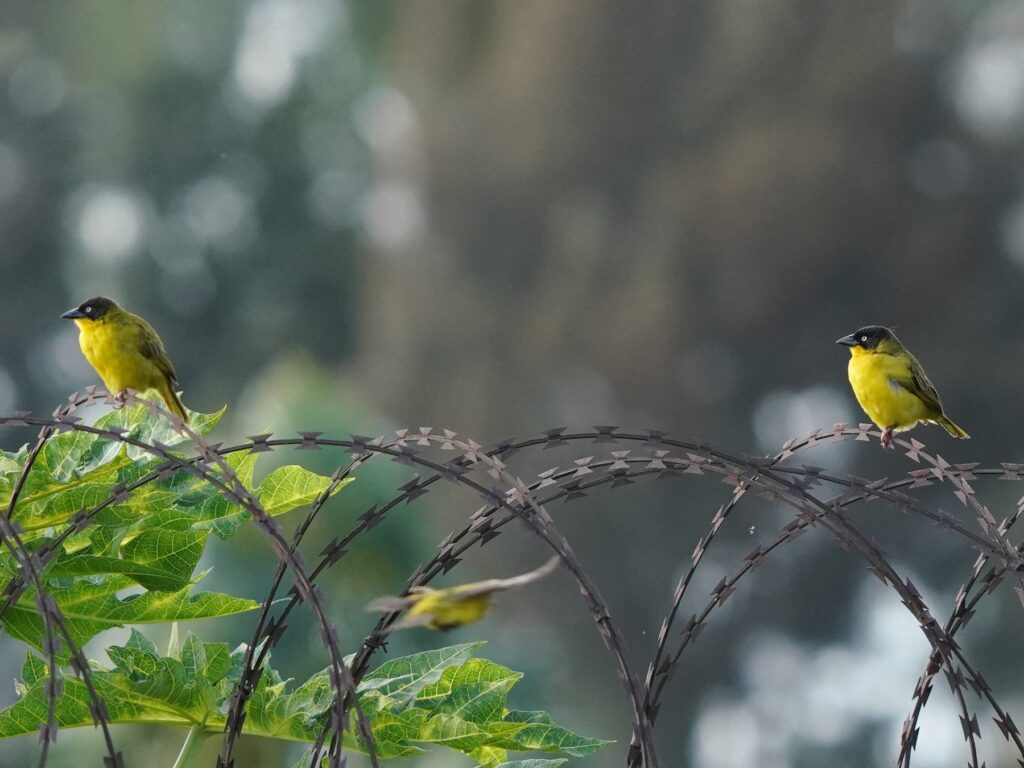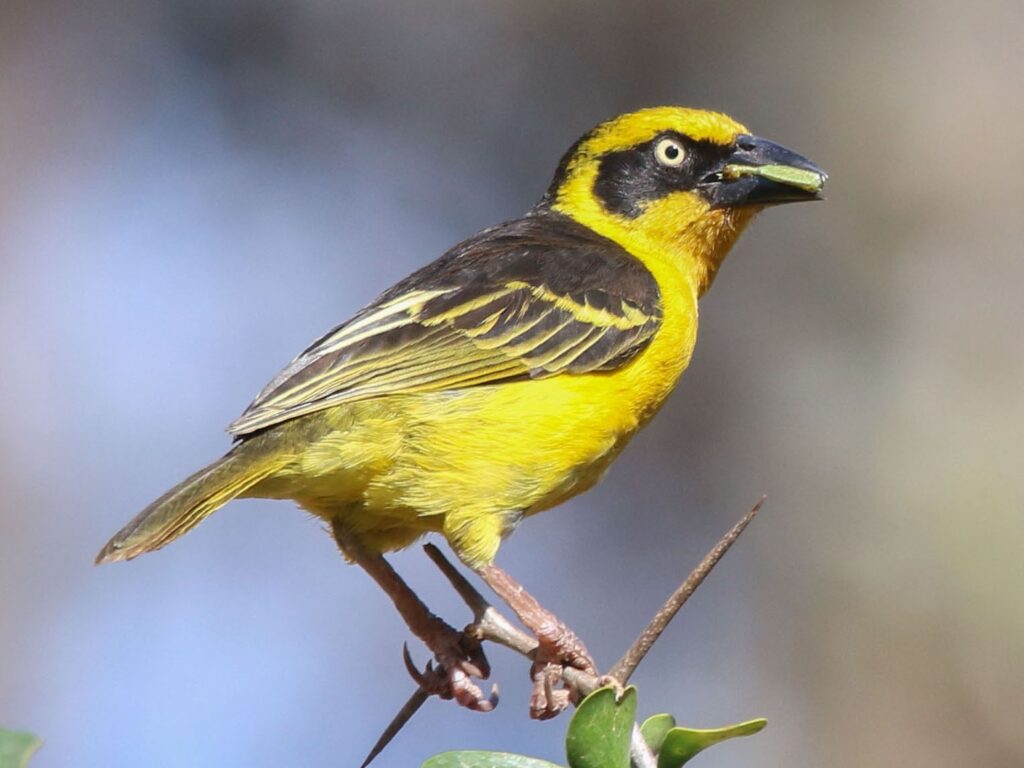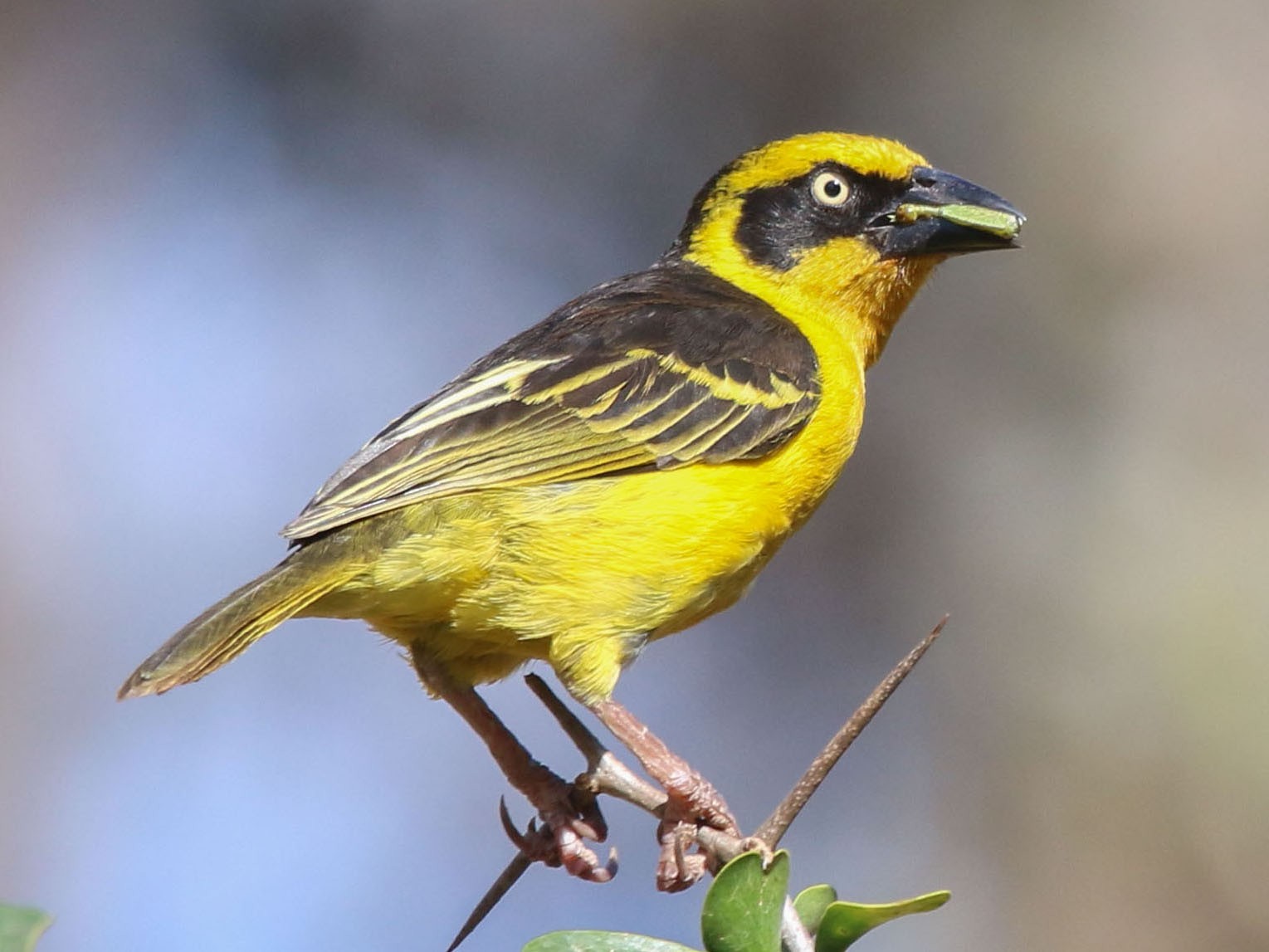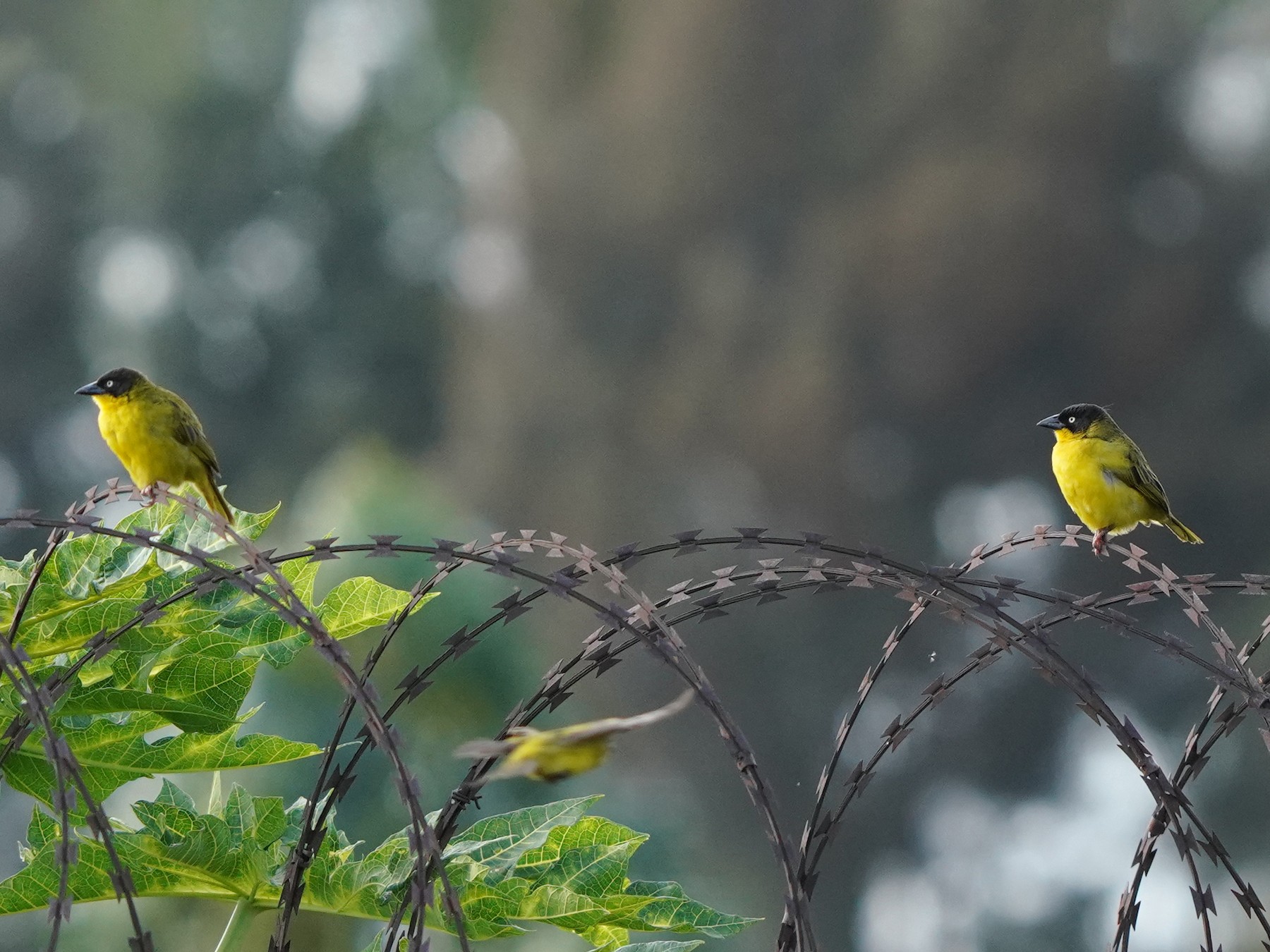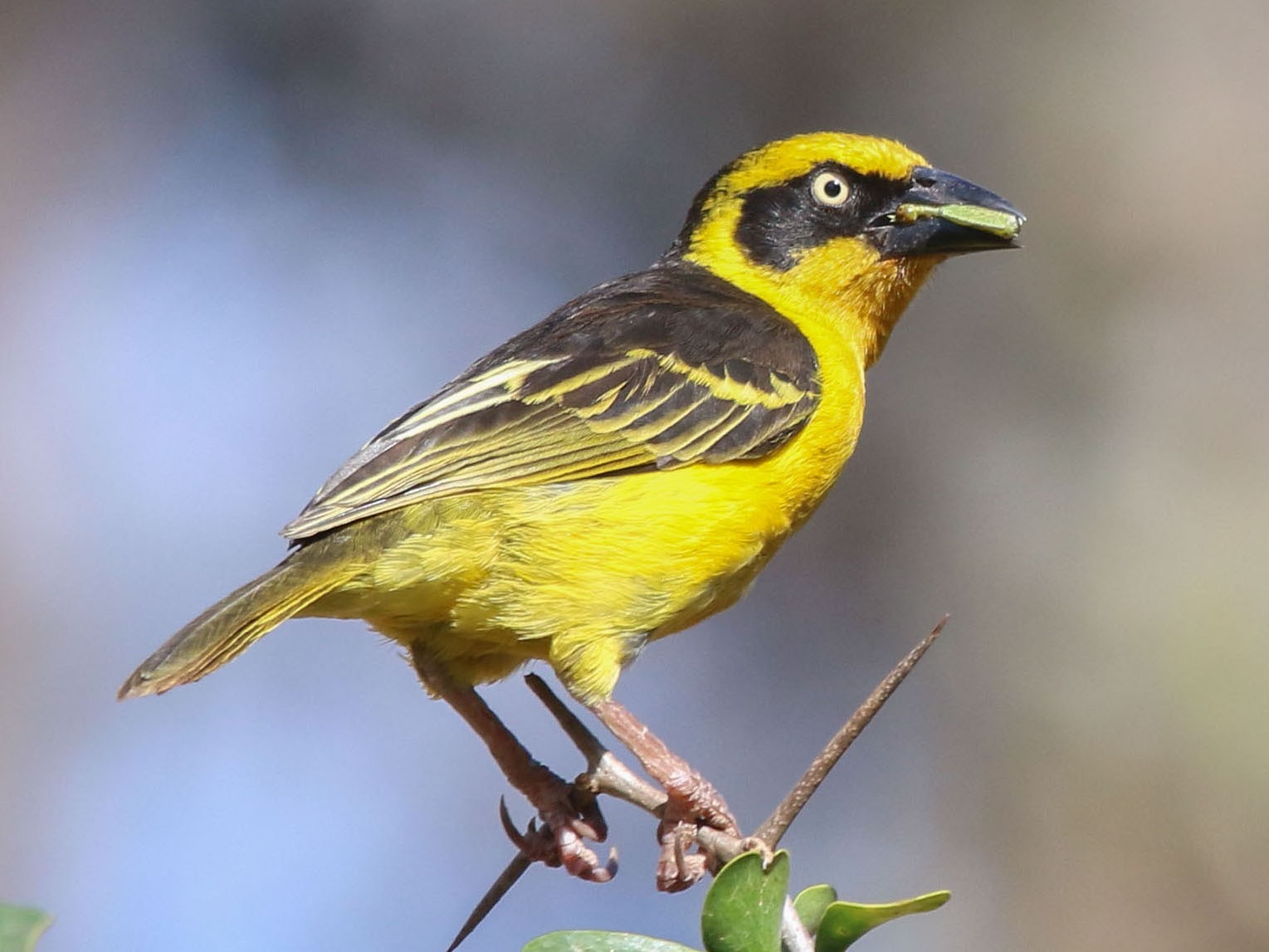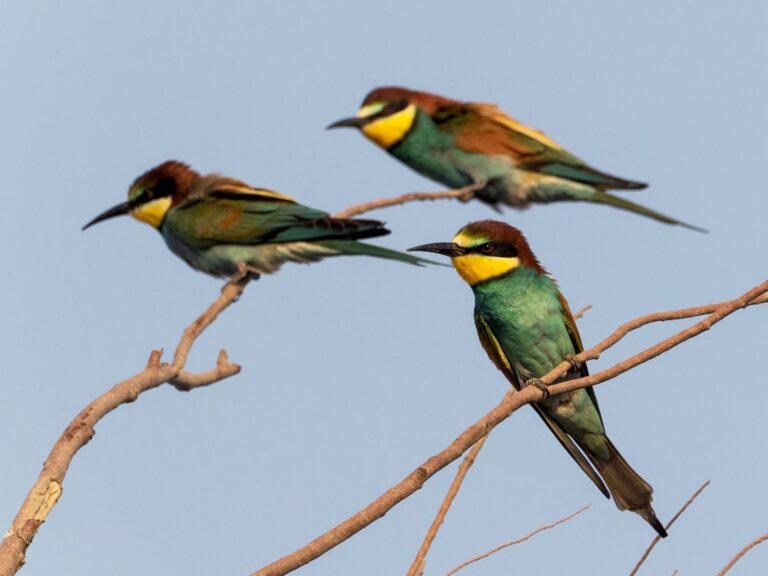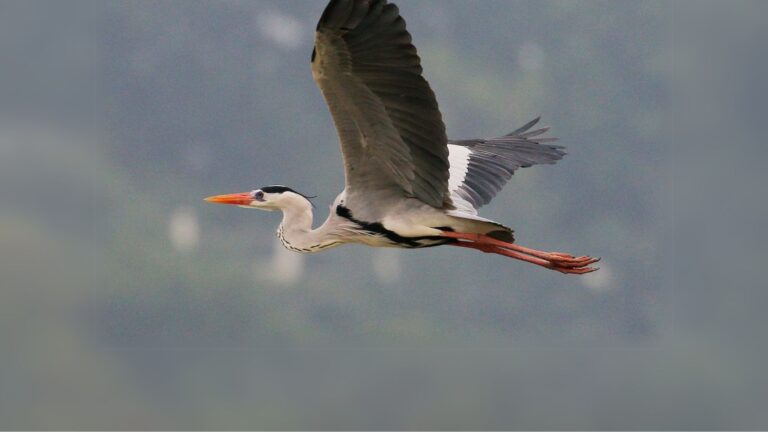Baglafecht Weaver: Fascinating Habits and Unique Nesting Techniques
Taxonomy and Classification
The Baglafecht Weaver (Ploceus baglafecht) belongs to the family Ploceidae, the weavers. Its scientific classification and recognized subspecies highlight just how distinct it is among African weaver birds.
Genus Ploceus
This bird sits in the genus Ploceus, which is packed with weaver birds spread across Africa and parts of Asia. These birds are known for their nest-weaving skills and show plenty of variety in how they look and act.
Members of Ploceus are generally sturdy, medium-sized songbirds with strong, conical bills made for eating seeds. There are over 60 species in this genus—pretty impressive, honestly. The Baglafecht Weaver fits right in, both in appearance and nesting style.
Learn More About the Bird’s of Africa
There are many wonderful resources to learn more about the spectacular biodiversity of our avian friends in Africa. Here’s just one.
Relation to Other Weaver Species
The Baglafecht Weaver stands a bit apart from its relatives. Studies using numerical taxonomic methods have placed it on the edge of the weaver cluster, meaning it’s a bit of an oddball. Still, it shares some classic weaver traits, like building dome-shaped nests.
Its nest looks a lot like those of Bertram’s Weaver and the Black-chinned Weaver. Some researchers think these species are closely related, based on their looks and nest styles—see A reanalysis of nest structure in the weavers (Ploceinae) if you’re keen on the details.
Subspecies of Baglafecht Weaver
Several subspecies of Baglafecht Weaver live across eastern and central Africa. The best-known is Reichenow’s Weaver (Ploceus baglafecht reichenowi), mostly in Ethiopia’s highlands. Others are split by geography and subtle color differences.
Here’s a quick look at some subspecies:
| Subspecies Name | Region |
|---|---|
| P. b. baglafecht | Eastern Africa |
| P. b. reichenowi | Ethiopian Highlands |
| P. b. emini | Central Africa |
These groups show some differences in color and calls, but their behavior and ecology stay pretty close.
Physical Description
The Baglafecht Weaver is an African songbird with eye-catching color contrasts and bold facial markings. Males and females look different, and the birds’ appearance shifts with the seasons, especially when they’re breeding.
Male Baglafecht Weaver Features
Males measure about 15 to 17 cm long. They show off a vivid yellow belly and neck, with an olive-green back. The wings and tail go darker, making the yellow pop even more. Their bill is strong and conical—perfect for seeds and insects. The legs are a pale, fleshy color, giving them a tidy look.
When males show off, they flash those bright yellow underparts and use their colors to catch a mate’s eye. Their pale yellow eyes stand out against the dark mask.
Black Mask and Yellow Eye Characteristics
A bold black mask runs from the bill, through the eyes, to the ear coverts. It’s more dramatic in males, edged with a narrow yellow line above—really sharp looking. That yellow eye is hard to miss against the dark mask, giving the bird a pretty intense stare. Other weavers rarely have this combo.
The black mask helps with flock communication and stands out during mating displays. It’s especially visible in bright light and helps birds recognize each other in noisy groups.
Breeding Plumage Changes
During breeding season, Baglafecht Weavers brighten up. The yellow on the chest and belly deepens, and the black mask gets bolder. These changes, triggered by hormones, let others know the bird’s ready to mate. The bill may darken a bit, too.
After breeding, the colors fade and the markings soften. Birds in drier or wetter parts of their range might show small differences in molt and color intensity. If you want to dig deeper, see this bit on plumage evolution in weaver birds.
Distribution and Range
The Baglafecht Weaver spreads across eastern and central Africa, from highland forests to city parks. Its range covers several countries, and it adapts to all sorts of habitats.
Ethiopia and Abyssinia
In Ethiopia, this weaver is everywhere—from city gardens to mountain forests and open woods. It’s especially common around Addis Ababa, with healthy populations documented in many studies.
Modern-day Ethiopia is a stronghold for the species. Birders spot it regularly in both wild and urban spaces, showing just how adaptable it is. The birds often nest in farmed landscapes, so they’re a familiar sight even where people are packed in.
Because it’s so common, researchers sometimes use the Baglafecht Weaver as a marker for bird diversity in northeast Addis Ababa and nearby highlands. Its presence can hint at ecosystem health and the effects of urban sprawl.
Presence in Kenya
Kenya’s Baglafecht Weavers live in the highlands and Rift Valley. You’ll see them in gardens, coffee plantations, and mountain forests—basically anywhere with thick foliage or mixed woods.
They’re a fixture in Kenya’s birdlife and show up in surveys of places like the Mau Narok/Molo grasslands. Local subspecies sometimes look or behave a bit differently, depending on where they are.
These weavers share space with other Ploceidae but seem to thrive even when habitats get disturbed. Some highland zones report them as one of the most successful weavers, especially in fragmented landscapes—see regional surveys for more.
Distribution in Northern Tanzania
In northern Tanzania, you’ll find Baglafecht Weavers in both national parks and near towns. They’re well-documented around Arusha, Kilimanjaro, and the southern Ngorongoro slopes.
They pick habitats from forest edges and mountain slopes to city parks, showing real flexibility. Observers report them in both wet and dry seasons, and there’s a bit of movement between breeding and non-breeding times.
Populations there seem stable, helped by Tanzania’s protected areas. Breeding colonies are more common in less-disturbed forests and farm edges, often mixing with other birds.
Populations in Nigeria and Malawi
They’re less common in West and southern Africa, but Baglafecht Weavers still have solid populations in Nigeria and Malawi. In Nigeria, they stick to montane forests, particularly on the Jos Plateau. Malawi’s birds cluster in upland forests and the Shire Highlands, usually in small, isolated groups—think forest patches, plantations, and rural gardens. Their range here is more limited than in East Africa.
Elevation and habitat quality shape where they live. Densities are highest in areas with less intensive farming. While numbers hold steady in some spots, there have been local declines where forests get cleared or land gets converted. Protected areas remain crucial for these outlying populations.
Habitat Preferences
Baglafecht Weavers are strongly tied to human-altered landscapes and show a surprising flexibility in where they’ll settle. Their habitat choices shape their numbers, breeding, and role in local bird communities.
Typical Habitat and Garden Environments
You’ll usually find them in upland and mountain habitats, but they really like places shaped by people—gardens and parks are favorites. Dense shrubs, trees, and varied plants make perfect nesting and feeding spots.
In city and suburban gardens, they forage and build nests in everything from exotic plants to fruit trees and hedges. They’re more common where there’s plenty of tree and bush cover for safety and resources.
Here’s a quick summary of their garden habitat picks:
| Feature | Preference Level |
|---|---|
| Dense shrubbery | High |
| Fruit trees | Medium |
| Open lawns | Low |
| Hedges | High |
In places like Kenya and Ethiopia, they do well in farmland and landscaped zones, taking advantage where other birds might not. If you want to know more about their knack for living alongside people, check out the Nyandarua agricultural landscape study.
Adaptation to Bush Areas
Sure, Baglafecht Weavers have a reputation for hanging around gardens, but honestly, they’re just as comfortable in wild, bushy spots. You’ll find them at the edges of bushland, in tangled hedgerows, and even in patches of secondary growth that border farmland. They use dense shrubs and trees for nesting and to dodge predators—nature’s own security system.
In these areas, the birds might pick native plants like acacias or whatever shrubs happen to offer good cover. They seem to go for places with enough vertical structure and leafy thickets to hide in.
Typical bushland features they like:
- Scattered trees and shrubs
- Moderate to dense plant growth
- Near water or farmland
Fieldwork shows Baglafecht Weavers doing well in a patchwork of bush and cultivated land, especially in East African highlands. Their knack for adjusting to different bushy habitats really stands out.
Behavior and Social Structure
Baglafecht Weavers have some pretty striking territorial habits and usually stick to a monogamous breeding plan. How they interact and nest shapes their social world, especially when breeding season rolls around.
Territorial Nature
When it’s time to breed, these weavers get fiercely territorial. Males defend their patch by building several nests close together, then showing off and calling to warn off rivals. It’s a bit of a show, honestly.
One male might weave a handful of nests in his territory, putting them out where females can see. Unlike some weavers that cram into huge colonies, Baglafecht Weavers tend to nest alone or in small, loose groups—see for yourself in the literature.
If another bird crosses the line, expect some chasing and posturing. They share space with other species too, so it’s a balancing act between holding ground and getting along.
Monogamous Breeding System
Most Baglafecht Weavers form monogamous pairs for the breeding season. After pairing up, the female checks out the male’s nests and picks one to lay her eggs in. She handles incubation and chick care, while the male helps guard the nest—though he sometimes tries his luck with other females.
This one-pair system usually means less drama at the nest, and it probably helps more chicks survive compared to species that crowd together or have multiple mates. You’ll find similar patterns in other weaver birds, but Baglafecht Weavers are a standout for sticking to monogamy among their relatives.
Both parents pitch in with feeding and protection, and they usually stick together until the chicks are grown.
Feeding Habits and Diet
Baglafecht Weavers aren’t picky eaters—they switch up their diet depending on what’s around and the time of year. Their feeding habits shift to meet the demands of breeding and molting, when they need all the energy they can get.
Primary Diet
These birds mostly go after insects and other tiny critters. They’ll hunt beetles, caterpillars, spiders, and grasshoppers on leaves, branches, and even down on the ground. This active foraging helps keep pest populations in check.
In farm country, Baglafecht Weavers often switch to whatever’s plentiful—sometimes that means eating more crop pests like caterpillars and beetles, which is a win for farmers and the ecosystem. When insects get scarce, especially in the dry season, they’ll snack on fruits and berries too. Makes sense, right?
Role of Seeds and Nectar
Seeds are a fallback, especially when bugs are hard to find or outside the breeding season. You’ll spot them picking seeds from wild grasses or even crops. Sometimes this puts them at odds with farmers—crop damage does happen, as noted in regional reports.
They’ll also take nectar when flowers are blooming. While not built for it, they make the most of the sugar rush when it’s available, adding a bit more variety to their diet.
Nesting and Reproduction
During breeding season, Baglafecht Weavers show off some pretty complex nesting and parenting behaviors. Their nests are carefully built, and they seem to adapt their strategies to whatever environment they’re in.
Nest Construction Techniques
These birds have a reputation for weaving intricate nests. They use grasses, strips of leaves, and fine fibers to make round or oval nests that dangle from tree branches—pretty clever for keeping predators at bay.
Males usually start the weaving, though females sometimes help out. Weavers really pack the material in tight to make a sturdy nest. The entrance points downward, making it tricky for snakes and other threats to get in.
Sometimes you’ll see a handful of nests grouped together, but it’s not the giant colonies some other weavers build. The choice of where to nest depends a lot on what plants are handy and how close they are to water.
Breeding Season Details
The timing of breeding varies quite a bit depending on where they live. In places with a rainy season, they usually breed when the rain starts—no surprise, since food for chicks is easier to find then.
During this time, males get extra territorial and flash their bright feathers to catch a female’s attention. They’ll build multiple nests and put on little displays at the entrances. Once a pair forms, the female checks the nest before laying eggs.
Courtship involves fluttering wings and calling from the nest. It’s a way for the female to judge both the nest and the male. Clutch sizes usually land between two and four eggs, but there’s some wiggle room.
Eggs and Chick Development
The eggs are usually pale blue, green, or white, sometimes with spots. The female handles incubation for about 12 to 14 days, keeping the eggs warm and safe from predators.
Chicks grow fast. Both parents bring food—mostly insects, but also seeds and fruit. This tag-team care means better odds for the young. Chicks leave the nest after roughly 15 to 17 days, though the parents keep feeding them for a bit even after they fledge.
Other African weavers show a range of breeding strategies, and Baglafecht Weavers seem especially adaptable—probably why they succeed in such varied habitats.
Conservation Status and Threats
Baglafecht Weavers live across East and Central Africa and have a knack for settling into gardens, woodlands, or even city parks. Still, some local threats can put pressure on their numbers.
IUCN Red List Assessment
The IUCN lists the Baglafecht Weaver as Least Concern. They’re widespread and, in many places, pretty common.
Populations seem stable, thanks in part to their ability to handle habitat changes—agriculture, suburbs, you name it. They do well in both protected and human-altered areas, which helps keep their numbers up.
Surveys from Kenya and Ethiopia back this up. In towns and villages, they’re often one of the most common weavers around—check out local bird counts like those in Kisii County for proof.
Major Threats to the Species
They’re not close to extinction, but Baglafecht Weavers do face issues. Habitat loss is the main problem—agriculture, urban sprawl, and cutting down forests all eat into their space.
Other threats include firewood gathering, draining wetlands, and new roads or buildings that cut up their habitat. Competition with other birds and exposure to farm chemicals can be problems, but less so than for birds with stricter habitat needs.
Changes around wetlands—like those near Lake Tana—show how sensitive they can be to environmental shifts, as discussed in studies on birds and wetlands. Keeping an eye on land and water use will be important for their future.
Photography and Image Use
Baglafecht Weaver photos are useful for science, journalism, or even commercial projects. Depending on how you want to use them, there are different licenses and download options to consider.
Frequently Asked Questions
The Baglafecht Weaver stands out for its unique plumage, clever nest-building, and its knack for popping up in both city parks and the countryside. Birdwatchers and researchers are drawn to its lively calls, the differences between males and females, and the way its habits shift with the seasons.
What distinguishes the Baglafecht Weaver from other weaver bird species?
The Baglafecht Weaver (Ploceus baglafecht) is pretty easy to spot if you know what to look for. Males usually show off a bold yellow face mask and underparts, while their upperparts lean olive or black. Unlike some weavers that crowd together, this species often nests alone or just with a few neighbors.
In Kenyan towns and cities, Baglafecht Weavers seem to do especially well. You’ll see them everywhere—probably because they’re so adaptable. In fact, they’re among the most common weavers in these areas, with a notably high population.
What adaptations allow the Baglafecht Weaver to thrive in its habitat?
Baglafecht Weavers handle a surprising range of environments, from forests to backyard gardens and city green spaces. Their real superpower is flexibility—they’ll eat insects, seeds, and whatever else they find.
They’re also skilled at weaving strong, enclosed nests that shield their eggs and chicks from predators and bad weather. That’s no small feat.
How does the mating ritual of the Baglafecht Weaver differ from other weaver birds?
Many weavers build flashy nests in big groups to impress mates, but the Baglafecht Weaver usually keeps things low-key. Males weave a dome-shaped nest, then try to catch a female’s eye with displays or calls.
This species mostly sticks to solitary or small-group nesting, which is a bit unusual compared to those noisy weaver colonies you might picture.
What are the primary differences between male and female Baglafecht Weavers in appearance and behavior?
Males have that unmistakable yellow face and breast, with a dark or olive cap and back. Females look a bit more understated—think olive-gray, with less obvious facial markings.
When it comes to behavior, males usually take charge of building the nest and act more territorial, especially during breeding season. They’re the show-offs, honestly.
What sounds or calls are characteristic of the Baglafecht Weaver?
Baglafecht Weavers have a pretty diverse vocal range. You’ll hear sharp “chek” notes, soft whistles, and some lively chattering. These sounds do a lot—warning others, attracting mates, or just keeping in touch with the group.
Those calls really help them stay connected and keep an ear out for trouble. It’s kind of amazing how much they communicate if you take the time to listen.
What is the geographical range and typical habitat of the Baglafecht Weaver?
The Baglafecht Weaver lives across a big stretch of eastern and central Africa—think Kenya, Ethiopia, Uganda, Rwanda, Tanzania, and parts of the Democratic Republic of Congo.
You’ll spot these birds in all sorts of places: montane forests, gardens, farms, even right in the middle of towns. Actually, in some spots, it’s one of the most commonly observed weaver species, especially where people are around but not crowding out nature.
